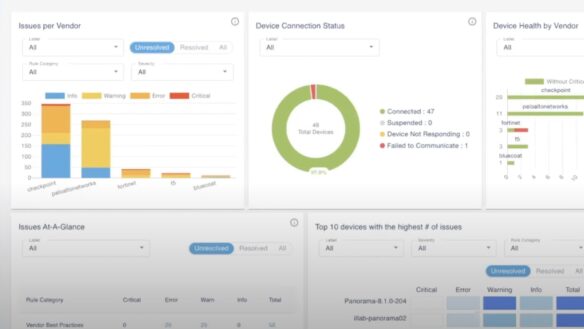The big picture behind BlueCat LiveAssurance
Learn how the basic principles of proactive observability, troubleshooting, and remediation.
The basics
Watch BlueCat CTO Andrew Wertkin explore three practical ways LiveAssurance helps network teams get ahead of downtime.

See the interface
Learn more about how to use widgets in the BlueCat LiveAssurance dashboard to rapidly respond to alerts to keep your infrastructure healthy.

Ready to learn more?
See how LiveAssurance helps to drive performance, security and uptime across:
Core network services (DNS, DHCP & IPAM)